The purpose of my project is to convert some 2D/Image points into 3D/World coordinates.
In order to determine the image coordinates, I have mapped the exact location of the image in meters/cms in the real world. Please see the image below,
 All the image points are highlighted in red on the image
All the image points are highlighted in red on the image
We assume the surface is flat therefore z=0, in world coordinates. This allows us to project x and y in 3D space whilst ignoring the Z axis.
I use the following code, mostly consisting of OpenCV functions.
import numpy as np
import cv2
# calibratiob done with cv2 calibtrate to get cam matrix and distortion params
dist_params = np.array([-2.80467218e-01, 6.67589890e-02, 9.79684e-05, 7.560530e-04, 0])
cam_matrix = np.array([
[880.27, 0, 804.05388],
[0.0, 877.2202, 431.85688],
[0.0, 0.0, 1.0],
])
# values are in meters
world_points_real = np.array([ # x, y, z
[4.92, 0.0, 0.0],
[4.92, -1.2, 0.0],
[4.92, -2.44, 0.0],
[4.92, -3.6, 0.0],
[4.62, 5.66, 0.0],
], dtype=np.float32).reshape((-1,3))
img_points = np.array([ # u, v
[ 937, 590],
[ 1076, 597],
[ 1220, 602],
[ 1359, 608],
[ 336, 543],,
], dtype=np.float32).reshape((-1,2))
# find rvecs and tvecs using OpenCV solvePnP methods
ret, rvecs, tvecs, dist = cv2.solvePnPRansac(world_points_real, img_points, cam_matrix, dist_params)#, flags=cv2.SOLVEPNP_ITERATIVE)
# # project 3d points to 2d
img_points_project, jac = cv2.projectPoints(np.array([4.62, 5.66, 0.0]), rvecs, tvecs, cam_matrix, dist_params)
print("img_points:", img_points_project) # this should be [ 305, 537]
# gives (-215:Assertion failed) Q.size() == Size(4,4)
# cv2.reprojectImageTo3D(img_points, r_and_t_vec)
# We assume a flat surface; ie z=0, to do 2d to 3d projection.
# Convert redian to Rodrigues
rvecs_rod, _ = cv2.Rodrigues(rvecs)
# create (3,4) shaped r&t_vec
r_and_t_vec = np.zeros((3,4))
r_and_t_vec[:,:-1] = rvecs_rod
r_and_t_vec[:,3] = tvecs.reshape(-1)
# find scaling factor
# r and t vector times any world coordinate point [x, y, z, 1]
sacling_factor = np.dot(r_and_t_vec, np.array([4.92, 0.0, 0.0 ,1]).reshape((4,1)))
#drop r3
r_and_t_vec_nor3 = np.delete(r_and_t_vec,2,1) # since z = 0, we take out r3
for i in range(len(img_points)):
# 2D points
uv1 = np.array([img_points[i][0], img_points[i][1], 1])
# Homography matrix
mat2 = np.dot(cam_matrix, r_and_t_vec_nor3)
# Inverse it
inv_mat2 = np.linalg.inv(mat2)
# multiply with uv1
result2 = np.dot(inv_mat2, uv1) * sacling_factor[2]
print("wprld_points:", result2) # this should be same as img_points
However, the projection is off by 2-3 meters. ChatGpt solution can only do 3D to 2D projection using cv2.projectpoints.
I tried using CV2 solvepnp to get the Rvecs and Tvecs. Then use them to generate the (3, 4) projection matrix. I use the inverse of the projection matrix to get the 3D projection given 2D image points. The rvecs and rvecs from solvepnp are below,
r_vecs = array([[ 1.24420712],
[-1.23779433],
[ 1.33559117]])
t_vecs = array([[1.54571503],
[1.46783797],
[2.78172814]])
I was expecting the projected 3D points to be close to the world_points_real but they are 2-3 meters off. I have tried with more points with no improvements. Where is the error coming from?
Reference: 1. SolvePnP in C++